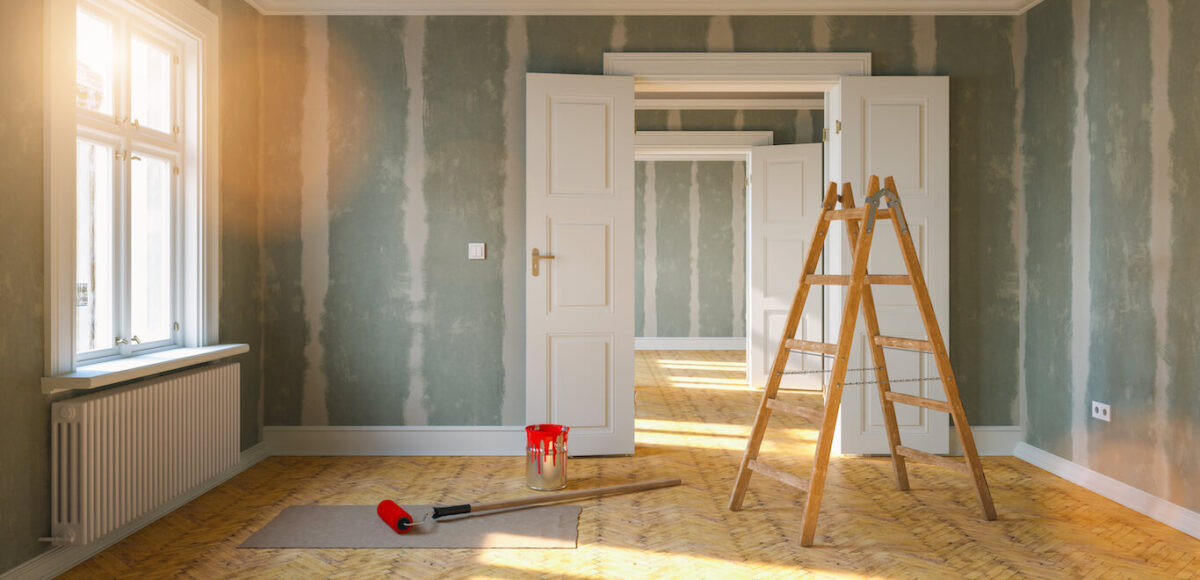Embarking on a home remodel or renovation project can be exciting and challenging. Whether you’re revamping your kitchen, renovating a bathroom, or transforming your first home, careful preparation and flexibility are key to achieving your dream space.
This comprehensive guide will walk you through the essential steps for preparing for a home remodeling project.
1. Define your project scope.
Undergoing a remodel is no underwhelming task. Before diving into any renovation, clearly define your goals and priorities. Determine whether you want to focus on a single space or multiple areas of your home. Are you looking to improve functionality, enhance aesthetics, increase space, or all of the above? Understanding your objectives will guide your decisions throughout the project.
2. Find your vision.
Start gathering inspiration for your renovation by exploring design styles and materials that resonate with you. Create mood boards, browse magazines, and use online platforms to collect ideas. This will help you clarify your budget and communicate your vision to contractors and designers effectively.
3. Determine your budget.
Setting a budget is one of the most critical aspects of any home renovation project. Doing so will help you better identify what’s possible for your space when it comes to design, materials, and labor costs. A clearly defined budget will also assist you in setting clear expectations with contractors or help you determine if a DIY renovation is more within budget.
It’s essential to strike a balance between your aspirations and financial capabilities. Be realistic about what you can afford and include a buffer for unexpected expenses that may arise during the process.
4. Establish a timeframe for your renovation project.
How long do you have to commit to a remodel? Home renovation can take anywhere from a weekend to several months, depending on the scope of work. A well-planned timeline ensures you have a clear roadmap for your reno and can help you manage expectations. Consider factors like your availability, the complexity of the project, any upcoming events or commitments, and even the smallest of factors like how long should paint dry before putting furniture back.
5. Find the right contractor.
If you’re considering a DIY remodel, be prepared for a significant time commitment and a learning curve. Ensure you have the necessary tools, materials, and skills. Hiring a contractor may simplify the process, but this comes with its own set of considerations.
If you receive outside assistance, you’ll want to research when selecting the best person or entity for the job. After all, choosing the right contractor is crucial for the success of your renovation, so you’ll want to find someone who aligns with your vision, has a solid track record, and fits within budget.
Ask for recommendations from friends, family, and neighbors. Research online reviews and ratings. Interview multiple contractors, check their credentials, and request detailed estimates.
Here are some questions to ask yourself when choosing the right professionals to bring your vision to life.
6. Stay organized.
For a smooth renovation experience and quick access to vital information, maintain a detailed project binder or digital file. This approach lets you track all project-related documents, contracts, receipts, and timelines, ensuring a well-organized process.
7. Decide on living arrangements.
Will you stay home during construction or find alternative living arrangements while the work is done? This decision often depends on the extent of the project, your tolerance for disruption, and your budget for temporary housing. Before making your final decision, talk to your contractor to determine how your presence in the home may affect cost, timeline, or workflow.
However, it’s important to note that staying home during a renovation could become more expensive and time-consuming than staying in a hotel or with a friend or family member. If you decide to stay, you may not have access to essential items or areas like your kitchen or bathroom. And if you’re working from home, you’ll need to make special accommodations to ensure a comfortable and productive workspace during the renovation.
8. Secure necessary permits.
Depending on the scope of your renovation, you may need permits from local authorities. Ask almost any home renovator, and they’ll tell you, “One of the things I wish I knew before remodeling a bathroom, kitchen, or other major area was to get my permits.”
Research the permit requirements in your area and ensure that all necessary approvals are in place before starting the project. Failure to do so could lead to costly delays or legal issues.
9. Take inventory of the belongings in your space.
Reno day is drawing near and now’s a great time to take stock of your belongings. Aside from insurance purposes, you’ll want to do this for several reasons, including:
Figure out what to leave and what to remove.
Depending on the project, you may need to leave some items or fixtures in place or remove them. In kitchen renovations, for example, consider whether to leave appliances in their existing location or temporarily move them until the project is done.
Decide what items you’d like to get rid of for good.
Renovations offer an excellent opportunity to declutter and start anew. Are there keepsakes and furniture items that are better left in the pre-reno past? Take a good look around to determine what you can live without and what spaces could use a major declutter overhaul.
Determine what items you absolutely need during the remodel.
Remodeling is rarely convenient, and you’ll likely need several items during the transformation. Choose these items with temporary downsizing in mind. If you’re remodeling your kitchen and staying on-site, it may be worthwhile to pull out portable cooking appliances.
Figure out what must go into storage or relocate to a different space.
It’s often best to store furniture and belongings for significant renovations to protect them from dust and damage. Renting a unit or portable storage solution is a convenient option. However, if this tacks too much onto your budget, determine alternate spaces like the basement or spare bedroom.
Determine which items need to be replaced or updated.
Some homeowners choose to take remodeling as an opportunity to refresh their living space with new furniture and appliances. Options like CORT Furniture Outlet offer reasonably priced, pre-loved furniture options, which can be a hassle-free solution if you’re looking for a fresh start.
10. Protect your home.
Consider the fate of your furniture and belongings during the renovation. Reno homes can become a revolving door for all sorts of people — from contractors and designers to delivery people. To ensure your belongings are safe, sound, and in good condition post-reno, consider taking these precautions:
- Cover floors that lead to and around high-traffic areas.
- Keep doors to unrenovated areas closed for dust control.
- Invest in video doorbells to monitor who comes in and out of your space and with what.
- Find a safe place to store important documents and contracts.
- Install smart locks that can be reprogrammed to temporarily allow access to your home at certain hours for certain people.
11. Prepare to be adaptable.
During any remodeling project, things can come up, and they aren’t always good. Materials may arrive broken or damaged, crucial elements may be out of stock or inflated in price, and issues behind demolished walls may point to problems with plumbing or other integral systems. Stay cool and collected during this process, and you’ll be much happier for it in the end.
12. Prepare for your return home.
Ensuring everything is in order post-renovation will help you transition smoothly into your newly revamped home. Here’s a breakdown of what you should consider when preparing your return:
- Schedule a final walkthrough with your contractor.
- Test appliances, plumbing fixtures, and outlets to ensure they work correctly.
- Thoroughly clean and dust the renovated area before moving in your belongings.
- Reconnect utilities and services to the renovated space.
- Consider scheduling a pest control service to inspect and treat the area if necessary.
- Plan for the return of your furniture and belongings.
- Prioritize interior design and decor to get the most out of your remodel.
- Keep all project-related documentation handy.
13. Come to CORT Furniture Outlet.
Once the dust has settled and your new renovation or remodel is complete, you can breathe a sigh of relief. The hard part is over; now you can enjoy your brand-new space!
But what do you do if your old furniture doesn’t make the cut? It may be time for something new. Is brand-new furniture out of your budget? Turn to CORT Furniture Outlet! Our stylish, durable options are up to 70% off retail prices and can be picked up the same day — you can enjoy savings, convenience, and style. Shop in-store or online today!






